|
 |
<<< Back to History
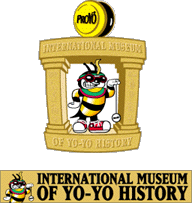
A Brief History of the YoYo-Top in the USA
(c) 1999-2002 Tom Van Dan Elzen
International Museum of YoYo History |
|
This compilation of patent information on yoyo-tops is only intended to wet your appetite for more research. Many of these patents are loaded with a wealth of information in the study and research of yoyos, tops and the combinations. I have included the patent numbers and dates to make your research easier. There are actually several more patents not covered herein. Please take this opportunity to see what others have done over the last century and applaud them for guiding us to where we are today. Remember, those who fail to study history are forced to re-live it.
Tom Van Dan Elzen (Abejero)
|

|
Here is a picture of the first yoyo (Bandelore) patented in the USA. It was patented by James L. Haven and Charles Hettrick of Cincinnati Ohio. If you study the picture, you will note that it also demonstrates the use of rim weighted design so popular with today's yoyos.
Patent No. 59,745, dated November 20, 1866
|
|
The top at the right is the first "Child's Spinning-Top" patented in the USA It was patented by Frank A, Fouts of Washington, DC. Other points of interest about this top is it's use of a "Bearing" on the tip, the string stays attached to the top in play and the use of a "Free Hand" weight so it can be freely tossed around. This top use a small rubber ball for the Freehand weight. Today, some people use a "die" or other colorful weighted device for the same purpose.
Patent No. 267,865, dated November 21, 1882
|
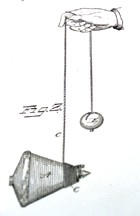
|
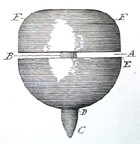
|
The first patented use of the combination yoyo (bandalore) and top was by Richard M. Pancoast of Camden, NJ. It was made from wood and had a very interesting shape. The fact that this was a "Design" patent instead of a "Utility" patent leads me to believe that yoyo-tops were known already and this shape was considered unique, not the idea of the combination.
Patent No. DES 34,558, dated April 11, 1901
|
|
This patent by Darius T. Phillips of Chicago, IL was rather unique in as much as when played as a yoyo, the string was tied to the two outer tips and "chicken" was counter weighted and always stayed upright. The chicken was easily detachable, however and allowed for conventional play with the string in the center. Kind of looks like a ProYo with two Duncan top sections glued on. Where have I recently seen something similar to this?
Patent No. 1,153,250 dated September 14, 1915
|
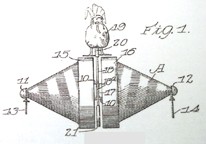 |
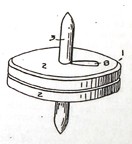
|
This was patented by August Anderson of Berkley, CA. This device also came with a "launcher" to help facilitate its use as a top. The launcher was the major part of the patent.
Patent No. 1,322,217 dated November 18, 1819
|
|
This device patented by Raymond J. Lohr of Erie, PA was unique in that it had a bearing assembly (item 18) that allowed the string to stay attached when played as a top. Note the difference in shape from the right half to the left half of the yoyo. This was obviously done to compensate for the weight balance when used as a yoyo
Patent No. 2,337,334 dated December 21, 1943
|
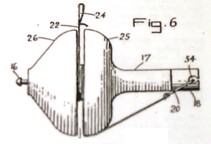
|
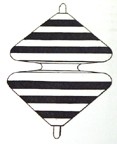
|
This yoyo-top was designed by Clinton J. Davidson of San Diego, CA. It was a "Design" patent based on shape and "bulls eye" pattern.
Patent No. DES 137,444 dated March 14, 1944
|
|
As with other "Design" patents, only the looks change. The function is the same. Cute though. Designed by Clinton J. Davidson of San Diego, CA.
Patent No. DES 139,743 dated December 19, 1944.
|
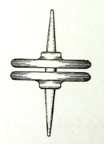
|
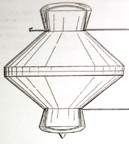
|
This was the first "Three-in-One" yoyo. It is a yoyo, a top and a whistle. It was patented by Henry E. Elfmont of Patchogue, NY. This is another yoyo where the string winds up at the outer part of the yoyo (see where the string is attached).
Patent No. DES 142,317 dated August 28, 1945
|
|
This device was patented for its novel method of assembly. It is a "take-apart" yoyo with no nuts bolts or screws. Patented by Jacob L. Spencer, Carl B. Spencer and J.B. Spencer (all from CA).
Patent No. 2,579,022 dated December 18, 1951
|
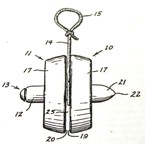
|
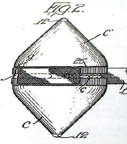
|
This device was patented for the novel use of a "ribbon" independent of the "cord/string" for use in launching it as a top. It was patented by Stephen P. Nemeth of Chicago, IL.
Patent No. 2,610,439 dated September 16, 1952
|
|
This device was patented twice by Everett W. Frangos of Lynn, MA. The first patent was for the yoyo-top itself and the second patent (called a "continuation in part" patent) was for a couple of modifications and accessories like the stand that allowed it to show off its gyroscopic abilities. This toy was marketed by Hasbro, Inc.
Patent No. 2,645,881 dated July 21, 1953 and
Patent No. 2,794,294 dated June 4, 1957
|
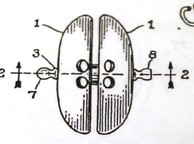
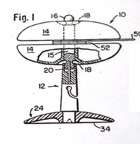
|
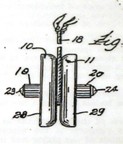
|
Not only did this device work as a top and a yoyo, but Mr. Ernest Madaras of Chicago, IL also gave us "adjustable string gap" from the outside without having to take the yoyo apart. This is the same method used by another yoyo company today. It appears he was having trouble getting it to respond. This is a typical problem of yoyos (especially metal yoyos) that do not incorporate Brake Pad Technology (tm).
Patent No. 2,891,351 dated June 23, 1959
|
|
This is another Design Patent for a shape of a yoyo-top. It was patented by James H. Nelligan of Glenview, IL.
Patent No. DES 197,239 dated December 31, 1963
|
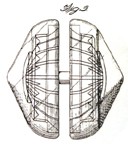
|
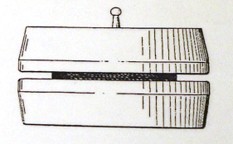
|
This is another Design Patent for a shape of a yoyo-top. It was patented by Stephen J. Salayka of Brooklyn, NY.
Patent No. DES 201,252 dated June 1, 1965
|
|
This device was patented by Fortunato S. Ajero of Cudahy, WI. His device had a launcher for use with the top to help those unfamiliar with the art of throwing a top to make it work.
Patent No.3,408,766 dated November 5, 1968
|
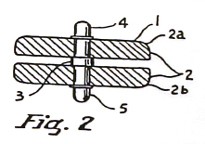
|
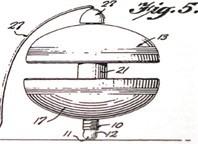
|
Another yoyo-top with the string either on the axle for use as a yoyo or attached to the rotatable end member to use as an attached top. It was patented by Harry G. Colmer, Jr. of Mobile, AL.
Patent No.3,413,753
|
|
This yoyo-top was patented by Eugene R. House of Emporium, PA. It utilizes a unique assembly method.
Patent No. 3,936,974 dated February 10, 1976
|
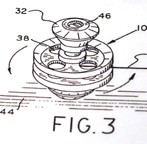
|
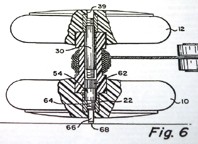
|
This device was patented by C. Vaugn Seifert of Boxborough, MA. It had lots of pieces and required taking apart and re-assembly to convert from a yoyo to a top and back.
Patent No. 5,017,172 dated May 21, 1991
|
|
This device was patented by Chen-Lung Ho of Taichung, Taiwan. It is a light up yoyo top.
Patent No. 5,356,328 dated October 18, 1994
|
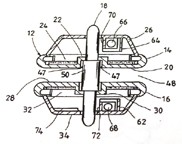
|
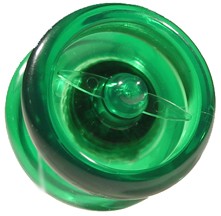 |
Then, in March 1998 Playmaxx produced the first Stunt Pilot in plastic (left). It was not deemed durable enough for the abuse of a top thrown free of the string. Roughly 12 months later, through material design efforts "ProYonium" was developed. This material was more "bullet proof" (lower left). Below is the production version as shipped in December of 1999.
|
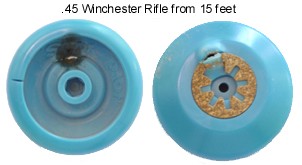
|

|
|
|
|
Copyright 1998-2002 Tom Van Dan Elzen
|
|
|
 |
|
|
 |
 |
|

